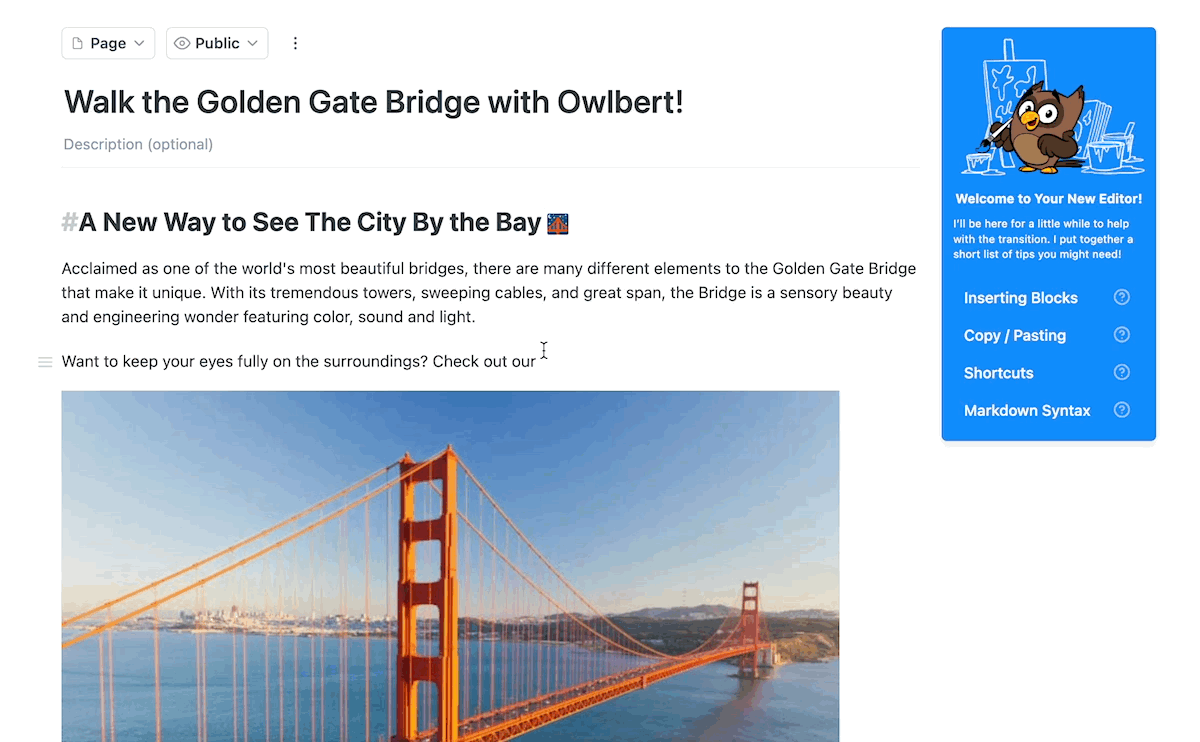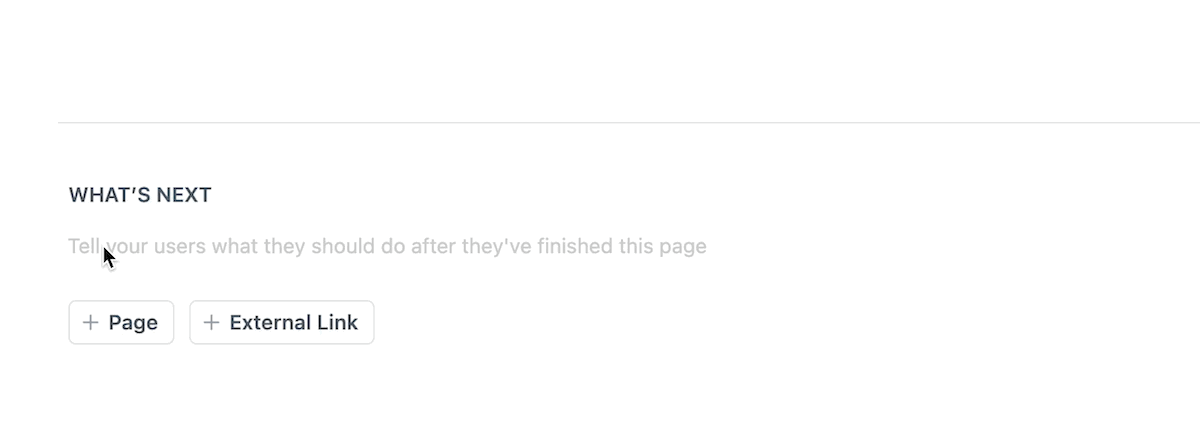Link to Pages
Internal Links
To create a link between pages, start by typing [ and a scrollable menu of available pages to link to will appear. As you continue typing more characters, relevant internal page link options will appear.

The resulting Markdown will look like this:

And end up looking like the link above to users!
Internal links only work within one project.
If you link across multiple projects, you must use standard hyperlinks.
Anchor Links
All section headers include an anchor link. The format is #header-name. So for example this link will bring you back to this section:
[link](doc:linking-to-pages#anchor-links)
External Links
Inline Linking
To link inline, type the text you want to link within brackets, [x], followed directly by the link URL within parentheses, (y).
Links look like this in the Markdown editor:
[ReadMe](readme.com)And result in a link that looks like this: ReadMe
Reference-Style Linking
Reference-style linking allows you to give a link a number or "name" and refer to it multiple times.
For example, if you type the below in your dash:
When I first research something I look at [Wikipedia][1] then at [Google][2] then [Wookiepedia][3].
[1]: https://wikipedia.org "Wikipedia"
[2]: https://google.com "Google"
[3]: https://starwars.fandom.com "Wookiepedia"...the links will look like this in your Hub:
When I first research something I look at Wikipedia then at Google then Wookiepedia.
Open Links in New Tab
Markdown and RDMD currently do not have a way to define the target for a link. Instead, standard HTML will need to be used to open links in a new tab.
The HTML syntax is target="_blank", which is used like this within the <a> tag:
<a href="https://readme.com/" target="_blank">ReadMe</a>This can be combined with our doc:page syntax to open links to pages within the same project like so:
<a href="doc:intro-to-readme" target="_blank">Introduction</a>
Validating Links
ReadMe supports several third-party tools to automatically find broken links in a documentation project, One service we suggest is the W3C Validator. No login required. For the URL field, enter your doc's custom domain. Select Hide redirects and select Check linked documents recursively. Leave recursion depth blank.
The results will only show links that are broken, not on which pages those links occur, or how many times the broken links occur,
What's Next
You can use the What's Next section at the bottom of the page to link to relevant pages within your project and/or relevant external links. You can also add a description to provide more context.

Updated 1 day ago
